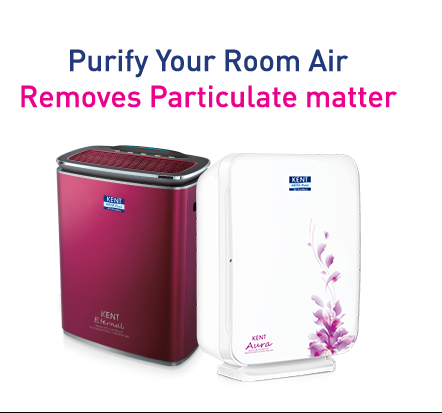Causes of Indoor Air Pollution
Home is the safest place on earth where you are protected from all potential dangers. However, are you aware of the fact that your home may not be as safe as you think? Indoor air pollution is a serious threat that risks the lives of your loved ones. The indoor air quality is 5 times more polluted than the outdoor air. The use of disinfectants, cleaning products, accumulated dust and dirt, room fresheners, incense sticks, everything contributes to the source of indoor air pollution. The problem is homeowners are unaware of these pollutants that are lurking in their homes. So, in this blog and infographic, we discuss the causes of indoor air pollution in detail.
What Causes Indoor Air Pollution?
When you think about air pollution, it is not just car emissions, industry fume, and smog, which are basically outdoor pollution. Never forget the contribution of indoor air pollution, which is much more dangerous compared to outdoor. The main source of indoor air pollution includes SPM, nitrogen dioxide, sulfur dioxide, carbon monoxide, formaldehyde, and many others. In addition to this, asbestos, tobacco smoke, radon, varnishes, paints, and perfumes are also the reason for indoor air pollution.
Here are some of the top sources of indoor air pollution.
1. Carpet Fumes
A new carpet changes the look of your home. However, when you use a new carpet there are chances that it will release harmful chemicals from vinyl backing and glue used in to hold the carpet. Also known as off-gassing, the chemicals lead to dizziness, nausea, headaches and breathing problems.
2. Toxins from Crockery
Using non-stick cookware is quite common in every home. A fact that most of us are not aware of is non-stick cookware release toxic fumes when they are overheated. When you overheat the cookware, it may lead to a condition known as ‘Teflon flu’, which may also kill birds.
3. Dry Cleaning
Dry cleaners use a chemical known as ‘perchloroethylene’, which remains on your clothes even after they have been washed. The chemical stays on your clothes at varying degrees and may also lead to cancer. If your clothes have a strong chemical smell, make sure you send them for a wash second time to avoid any health problems.
4. Fragrances, perfumes or deodorizers
Perfumes and deodorizers contain volatile and non-volatile chemicals and they create air pollution in the home. The substances used in these products are not monitored and unregulated. These chemicals are toxic and lead to skin irritation, allergic reactions, birth defects, reproductive disorders, and cancer.
5. Secondhand Tobacco Smoke
A deadly indoor air pollutant, secondhand smoke can’t be removed by ventilation, filtering or separating smokers from non-smokers. Secondhand smoke creates air pollution in the home and poses different kinds of risks for children and adults. Children suffer from respiratory problems, and infections as a result of secondhand smoke, whereas adults are at a higher risk of heart disease, stroke, and lung cancer.
Indoor air pollution is a serious problem. Check out the infographic to learn about the various indoor air pollutants and their impact on health.
Air Pollution Infographic

How to Deal with Indoor Air Pollution?
Indoor air pollution is easier to manage as compared to outdoor pollution. Here are some of the effective ways to prevent indoor pollution.
1. Use a Room Air Purifier
One of the most effective ways to deal with indoor air pollution is to use an air purifier. HEPA air purifiers catch and trap 99.9% of pollutants so that you breathe safely. The air purifiers easily remove formaldehyde, cigarette smoke, and many other pollutants. The purifiers also have a high purification capacity, which helps in purifying the room within a short span of time.
2. Use a Vacuum Cleaner
Instead of using traditional methods of cleaning your home, switch to a vacuum cleaner. Go for bagless vacuum cleaners that use HEPA technology to remove germs completely. The HEPA filters reduce pollution, thereby keeping you safe from asthma and breathing problems.
3. Reduce the Usage of Cleaning Supplies
Cleaning supplies are an unknown source of indoor air pollution. As much as possible, make sure you reduce the usage of cleaning supplies. The lesser presence of VOCs in your home the better is the indoor air quality.
Read More: Top 14 Most Polluted Cities in India






It would be helpful if KENT products had declarations of usage/not-usage of materials such as Teflon too